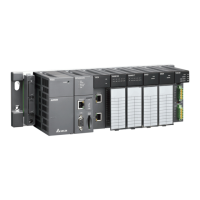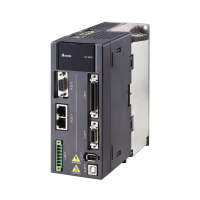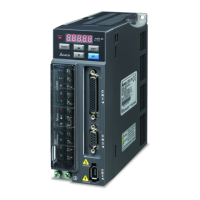Chapter 6 Applied Instructions
6-455
b15
b0
b7 b8
S
S+1
D+1
S+2
S+3
D
b15
b12 b11
b8 b7 b4
b3
b0
b15
b12 b11
b8 b7 b4
b3
b0
ASCII code in
the units place
ASCII code in
the tens place
ASCII code in
the hundreds place
ASCII code in
the thousands place
ASCII code in the
ten thousands place
ASCII code in the hundred
thousands place
ASCII code in
the millions place
ASCII code in
the ten millions place
Units place
Tens place
H
undreds place
Thousands place
Hundred thousands place
Ten thousands place
Millions place
Ten millions place
If the ASCII code in S~S+3 is 87654321, the conversion result is as follows.
b15
b0
b7 b8
S
S+1
D+1
S+2
S+3
8
D
b15
b12 b11
b8 b7 b4
b3
b0
b15
b12 b11
b8 b7 b4
b3
b0
16#37(7)
16#38(8)
16#36(6)
16#35(5)
16#34(4)
16#33(3)
16#32(2) 16#31(1)
7
6
5
4
3
2
1
4. If the value in S is 16#20 or 16#00, the value is processed as 16#30.
5. If S used in the 16-bit instruction is a string, the number of characters contained in the string
should be within the range between 1 and 4. If S used in the 32-bit instruction is a string, the
number of characters contained in the string should be within the range between 1 and 8.
Example 1:
Suppose the values in D20 and D21 are 16#3420 and 16#3439 respectively. When the PLC runs,
the value in Y0 is 16#494.
b15
b0
b15
b0
b7 b8
b3
b4 b7
b8
b11
b12
16#34(4) 16#20( )
16#34(4) 16#39(9)
4 9 4
D20
D21
Y0
Example 2:
Suppose the values in D20, D21, D22, and D23 are 16#3738, 16#3536, 16#3334, and 16#3132
respectively. When the PLC runs, the value in (D11, D10) is 16#87654321.
b15
b0
b7 b8
8
b15
b12 b11
b8 b7 b4
b3
b0
b15
b12 b11
b8 b7 b4
b3
b0
16#37(7)
38(8)16#
36(
6)16#
35(5)16#
34(4)16#
33(3)16#
32(2)16# 31(1)16#
7
6
5
4
3
2
1
D20
D21
D22
D
11
D10
D23
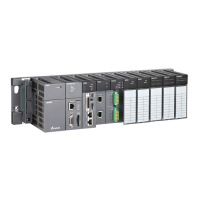
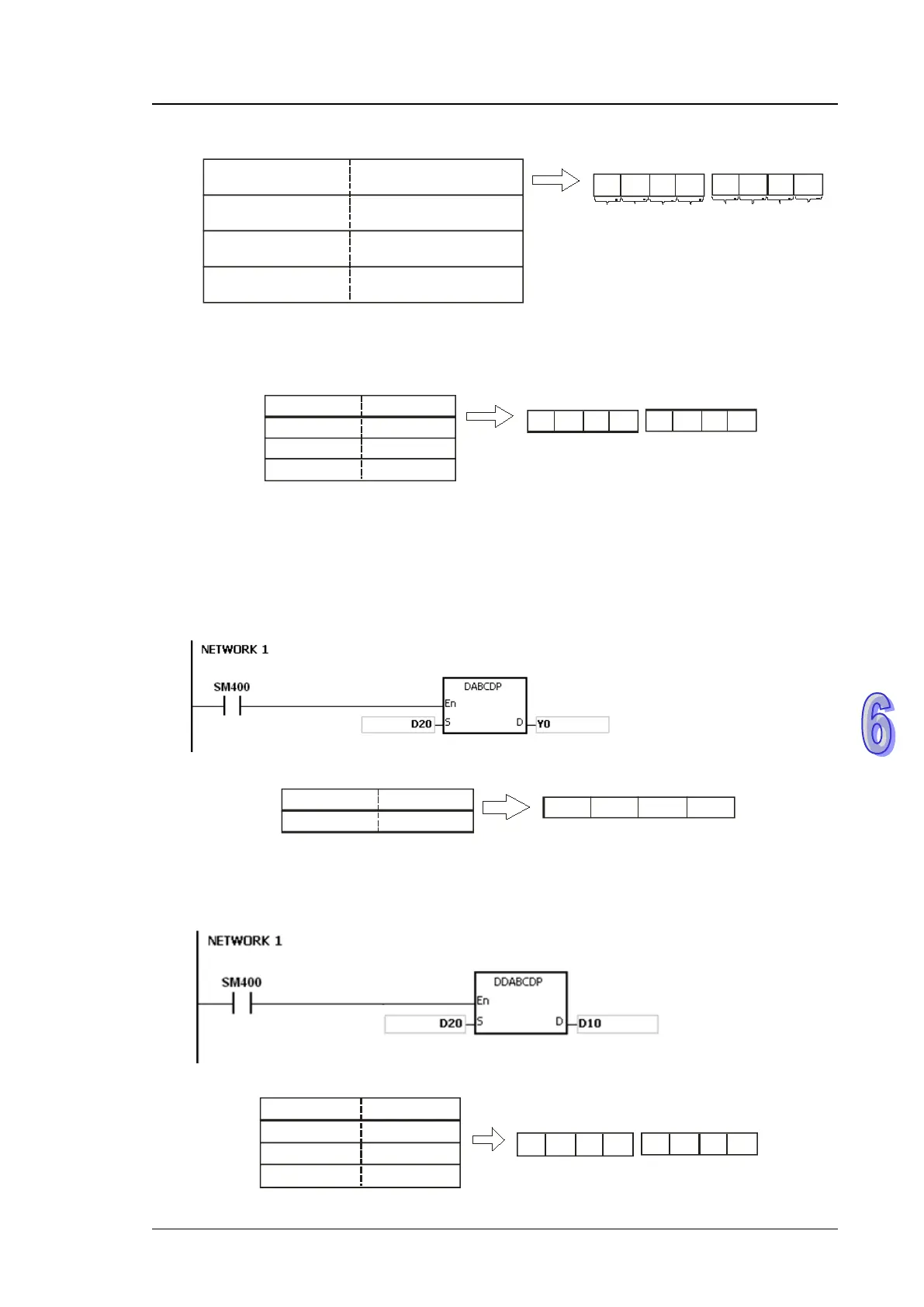